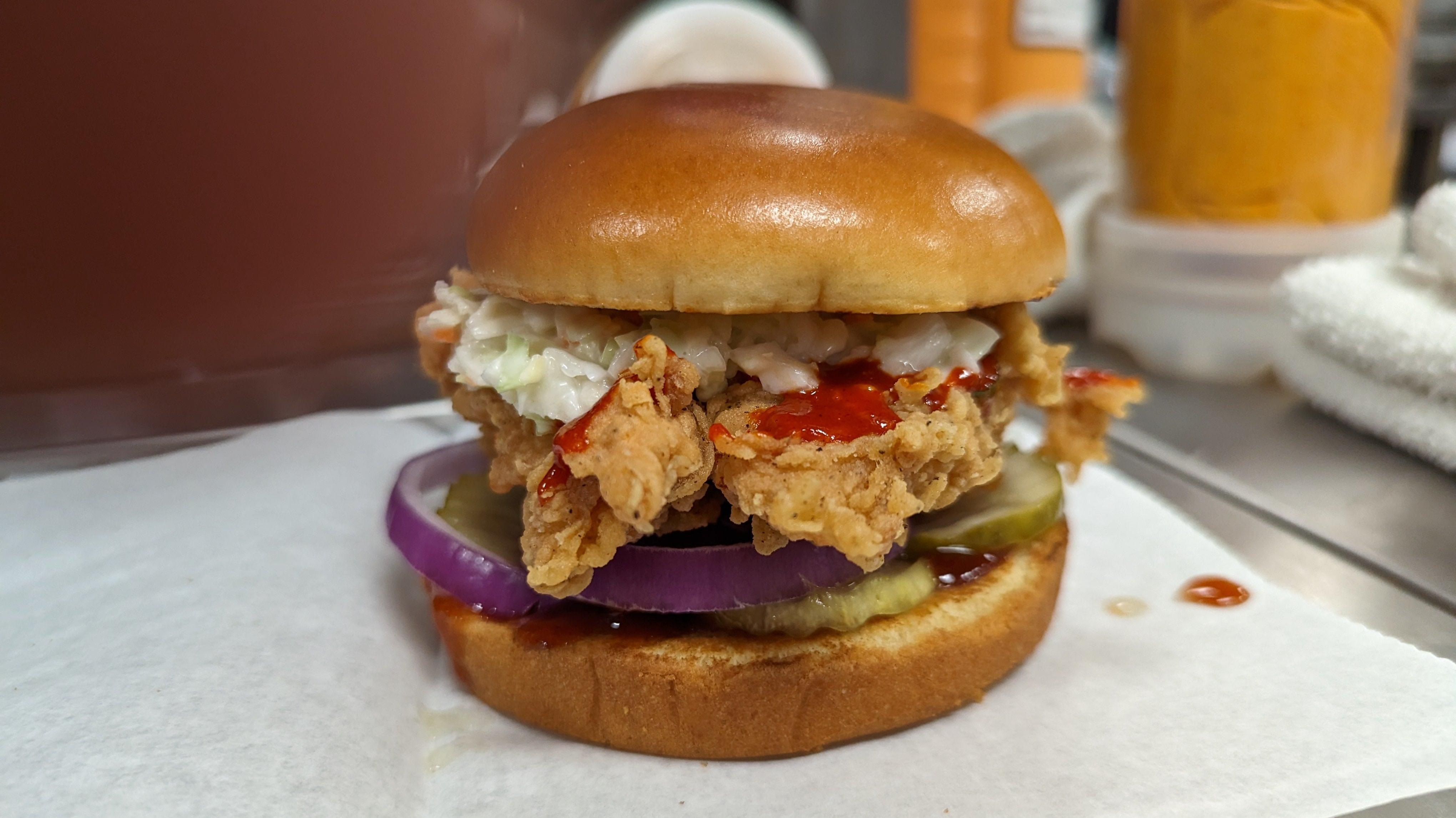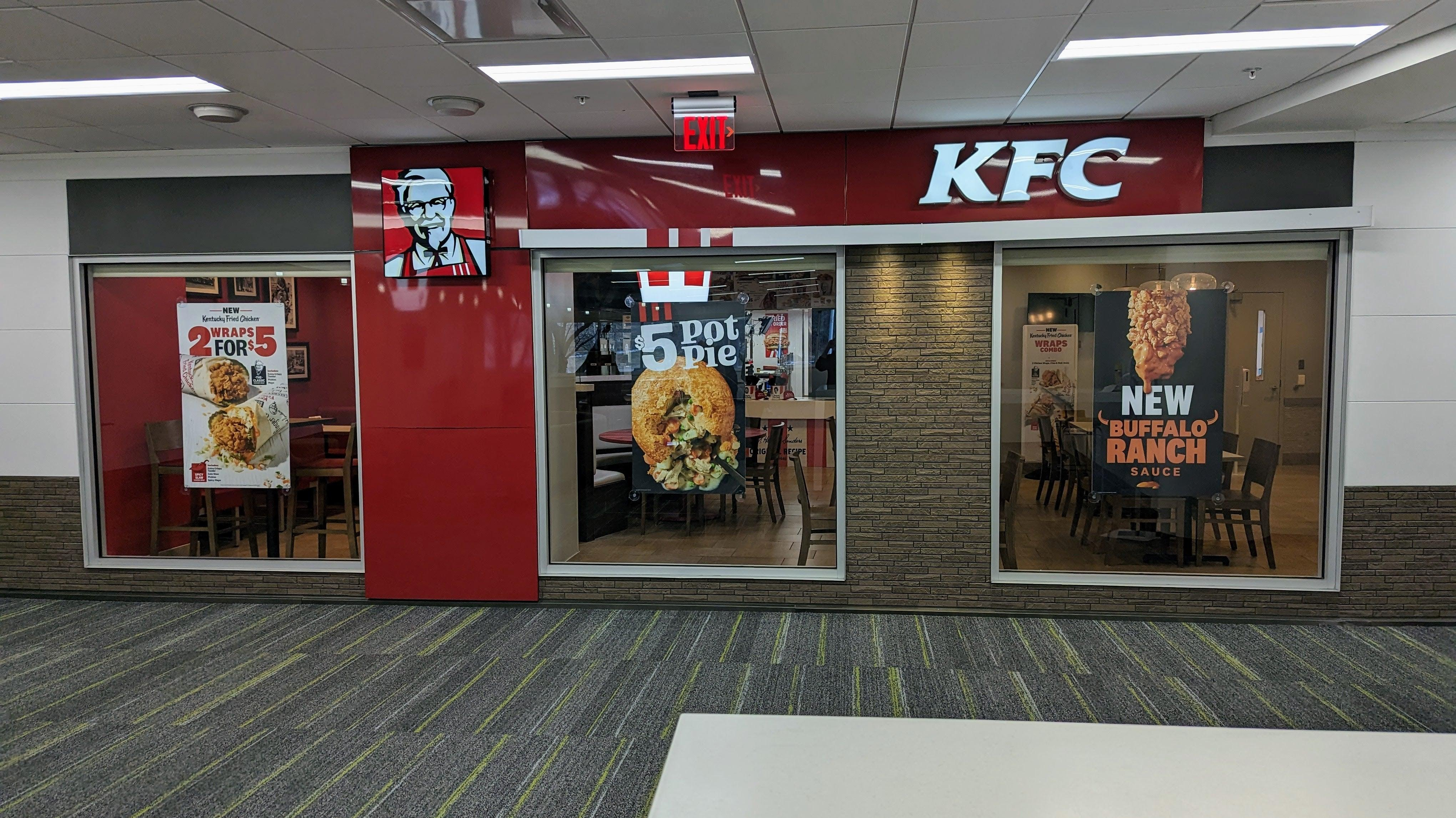My Day In The KFC Test Kitchen
It takes a lot of fried chicken experimentation to develop a new menu item.
"Welcome!" said the larger-than-life sized animatronic statue, suddenly moving and scaring the crap out of me. "My name is Colonel Harlan Sanders, and this museum is all about my life."
I was in the Colonel Sanders Museum tucked inside KFC's headquarters in Louisville, Kentucky, with a small crew of other journalists. All of us had been invited to bourbon country so we could check out KFC's corporate kitchen for ourselves; there we would see how some of the products were made, check out upcoming menu items, and hear about the process of developing new dishes.
But the trip didn't just involve eating fried chicken until our arteries popped. We also had the chance to each design a culinary concoction of our own so that we could fully appreciate everything that goes into a fast food release. After passing through the museum under the Colonel's watchful eye, that's exactly what we did.
How new KFC products are developed
The KFC test kitchen is squirreled away inside the corporate office building, complete with a dining room, point of sale system, signage, and all the standard equipment installed in units across the country. Essentially, it's a replica KFC restaurant right inside KFC HQ, and it's where all the development takes place.
KFC head chef Christopher Scott showed us around the kitchen, explaining the process involved in breading the chicken, dropping it into the oil, and frying it off.
Having a good idea for a menu item is one thing, but there are lots of other factors to consider: ingredient sourcing, marketing strategies, and more. Most importantly, kitchen viability has to be taken into account. Is the new item streamlined enough that it can be assembled quickly, no matter how many orders are pouring in? Will assembling this item make a KFC employee's job more difficult?
Experimenting in KFC’s test kitchen
I won't lie—it's fun playing around with ingredients, especially in a fast food kitchen. When I was a pizzamaker, coming up with ideas for specials was one of my favorite parts of the job. I'd often play with layers of flavor, various textures, and even the temperature of certain components before deciding whether to add a dish to the menu.
As a chef, Scott understands the power of various sauces and condiments, and he brings all sorts of ingredients into the test kitchen. On my visit, he had a version of Korean ssamjang on hand that he'd put together; I wasn't expecting to see a dipping sauce typically made of fermented soybean paste (doenjang), fermented red pepper paste (gochujang), garlic, onion, sesame seeds, and sesame oil being put to use at a thoroughly American fried chicken chain.
He also had other store-bought items to play with, like a garlic crunch (similar to chili crisp) and bottled Mambo sauce (a popular condiment in Washington D.C. that I'd liken to sweet and sour sauce). KFC's standard sides and ingredients were also in play: coleslaw, mac and cheese, lettuce, tomato, onion, you name it.
My play sandwich started with a generous amount of Mambo sauce spread on the bottom bun. Then I added raw red onions, pickles, the KFC chicken filet, a dose of ssamjang, and coleslaw.
The resulting bites were sweet, savory, and full of different types of crunch from the pickles, chicken breading, and coleslaw; there was also a nice temperature contrast from the hot and cold ingredients. It was a rewarding process, and somewhat surreal, since most of the ingredients signaled to me that I was eating a real KFC product. But at KFC's size, building a single successful chicken sandwich is almost meaningless unless you can scale it up.
How a new KFC item eventually makes it to the menu
I'd made a sandwich that was perfectly suited my personal tastes, but I realized something like this would be a hard sell to the general population, since you'd have to explain to customers what ssamjang is—indeed, KFC confirmed that consumers prefer descriptive product names that are easy to understand without additional context. Then I wondered if my assembly was viable at all, since a lot of its components aren't typical to a KFC kitchen and it's not ideal to stock all those additional ingredients for a single menu item.
I asked Diane Miller, the Director of Innovation for KFC's U.S. division, some questions about how new items are conceived and eventually brought to restaurants. Theoretically, would it be possible to serve my original concoction nationwide?
"Whenever we serve a product with multiple ingredients, we train team members extensively on proper build technique and portioning, so we are delivering a consistent product to our customers every time," Miller said. "Sometimes we introduce tools that help portioning. For example, for our current KFC Spicy Slaw Wrap, we brought in a tool to portion just the right amount of coleslaw. We've also recently switched to an advanced saucing dispenser that helps consistently distribute the same amount of sauce on our sandwiches."
If a new ingredient is going to be introduced, Miller explained that it must be carefully chosen. It has to be something that KFC's suppliers can reliably deliver, and it can't cost too much per unit, and it can't be too fussy to work with. (You can see why it's preferable to innovate using whatever's already on hand, as fellow Yum Brands company Taco Bell seems to do.)
If all the ingredients are determined to be easy enough to stock and assemble, things would still take time to reach actual customers. Miller noted that a typical timeline is one to two years from conception to debut, although KFC has, she says, "launched a new product nationally in as little as six to eight months."
And of course, we know that some really original creations have resulted from this process.
"The Double Down is our most distinctive," Miller says. "The KFC Cheetos Sandwich and KFC Pickle Fried Chicken also come to mind as really breakthrough and different."
Next, there's the test market to contend with. Right now, KFC is testing two new sandwiches in Tampa, Florida: the Ultimate KFC BBQ Chicken Sandwich (cheese, lots of barbecue sauce, crispy fried onions, bacon, and pickles) and the Spicy Slaw Chicken Sandwich (topped with a surprisingly spicy mayo, coleslaw, and pickles).
I was able to taste both of these sandwiches in the KFC test kitchen. Both are good, depending on your mood, but I much preferred the Spicy Slaw, mostly because I love spicy food and KFC's coleslaw is already one of my preferred fast food sides.
So, will we ever see the Dennis Special at KFC? Probably not, but it's not impossible. If it did go through all the necessary streamlining, testing, and scaling, it would likely emerge from that drive-thru window looking a lot different from what was originally conceived, down to its very name. But each new menu item has to come from somewhere, right?

